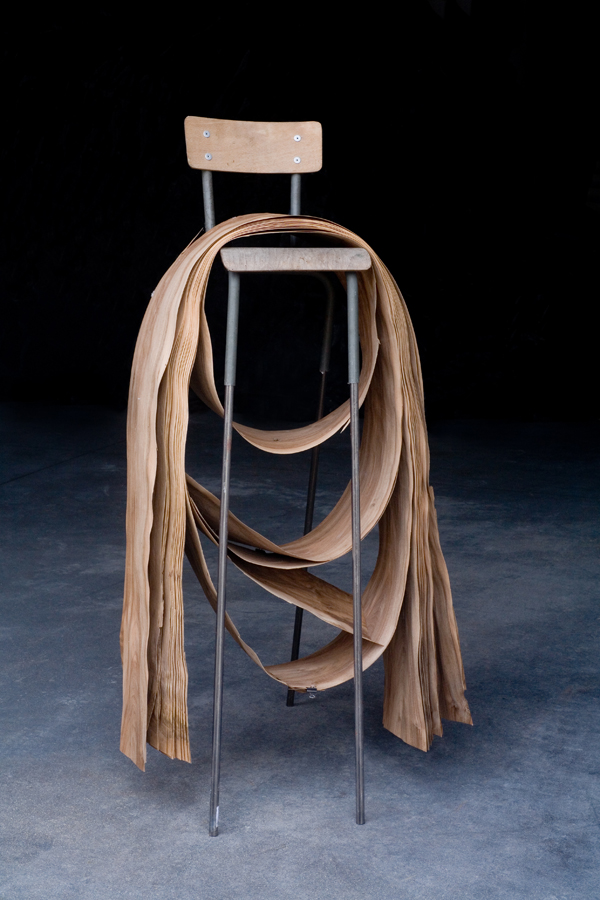

Mario d’Souza
Stéphanie Airaud
Why entertain such a fear of watches, of hybrid beings ? Because their shape stems from a powerful gesture that destined them to a metamorphosis with no end ? Yet, we are all physically and intellectually engaged in a phenomenon of permanent and inevitable diversity and mixture. Our society fears encountering other worlds— an anguish that can be tinged with nationalism for some. And yet otherness is our very nature. In Jérôme Bosch’s paintings, the forms of miscegenation were nothing other than monsters of hell. And yet nothing is eternal, everything is doomed to disappear, to transform itself, to clash.
Mario d’Souza’s work speaks of this destiny, of this positivity of forms and their perpetual crisscrossing. Through his sculptures, installations, drawings or participative projects, to which he devotes a non-negligible part of his activity, he explores the gesture that will respect the materials (as varied as vine stock, foam, metal) and the history of the objects he manipulates, but which will tend at the same time towards going beyond their initial use and function. By assembling, even encasing, the carcass of a standardized devitalized tubular chair and a bloc of white foam of monstrously excessive size, he confers on them an entirely new force of expansion. In the opposite direction, he can, in another assemblage, test the modalities of gravity. The notions of elevation and expansion are at the heart of Mario d’Souza’s work. They can be found as a matter of course in gothic architecture, giving those edifices impressions of gigantic scales, pushed towards spiritual heights. In dance, the power of the body’s elevation, of which Nijinsky was the most representative, engages the entire psyche. But nowadays, this classical Icarian dream can be brought into question by a body of work about the signification of gravity, the reality of the earth, and the exploration of horizontality.
The chair is a central motif in Mario d’Souza’s work—first the armchair then standardized school chairs. He could appear to be questioning the standardization of objects, of thoughts and behaviours, as in Claude Lévêque’s famous sculpture Asile (1988). But the questioning would more wilfully tend towards the natural or mental landscape. We are familiar with the pop chair (Warhol’s electric one), the constructivist chair (Rietveld), the conceptual chair (Kosuth) or even the metaphysical chair (Ramette). In this case, it is a landscape or a bio-dynamic chair (as an echo to bio-dynamic agriculture which is based on a profound understanding of the laws of the “living” !).
The history of modern and contemporary art is fed with these experiments in hybridization and tension of opposites, following the footsteps of cubist collages, the first form of intrusion into reality’s space of representation, into the “real” world. In 1912, Picasso created the first collision of this type with Still-life with Chair Canning (what do you know, another chair !), more specifically a piece of oilcloth representing a caning pattern. A reclaimed material bestowed with a new narrative function.
In fact, Mario d’Souza’s studio brings to mind Kurt Schwitters’ Merzbilder, a space where he collected the city’s refuse, papers and bus tickets. Mario d’Souza saves clothes, chairs, as well as natural and organic matter for later on. He waits, observes and allows, through drawings and experimentations, the final assembling gesture to come and give the objects a new found vitality. He thus respects the economy, even the ecology of the work and of its process.
“The concept I am developing is frequently understood in the gesture that reveals the object, by shifting it, revisiting it. My concept of work functions like a link, a bridge between the formal object, with its own history, its own utility (which conditions its appearance) and the revealed object”.